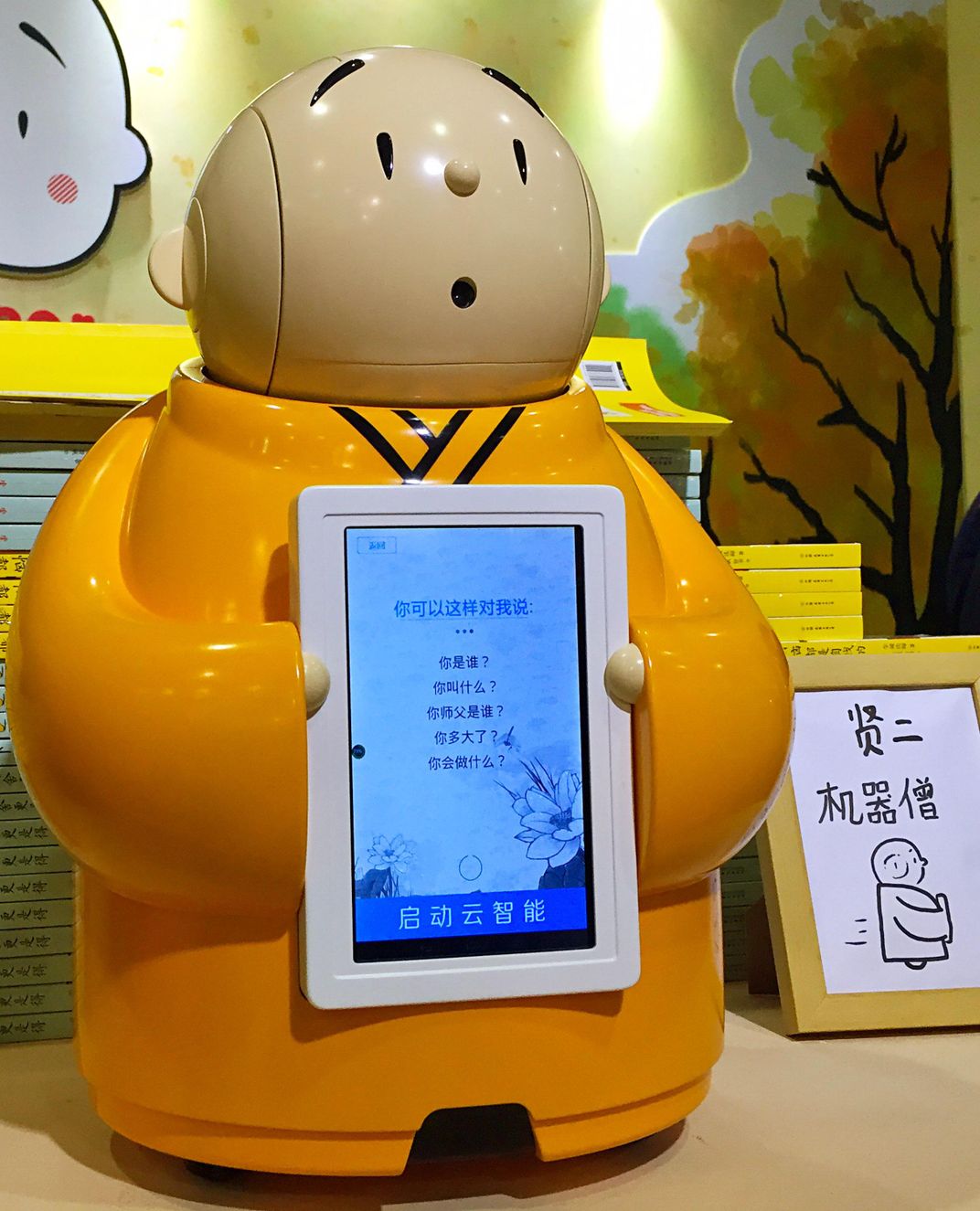A Robot Monk Is Spreading Buddhist Teachings in China
An adorable robot serves up automated mantras
/https://tf-cmsv2-smithsonianmag-media.s3.amazonaws.com/filer/57/7a/577a4f3f-a2e9-4898-9749-2f141ae7f029/42-77617997.jpg)
Robots may not be the most traditional means of spreading Buddhist teachings, but one Chinese temple is giving it a go. By working with engineers and artificial intelligence experts from some of China’s top universities, a Buddhist monk who lives just outside of Beijing has developed a little robot monk who can hold simple conversations and recite traditional chants in hopes of sharing ancient teachings through modern technology.
With bright yellow robes and a shaved head, the two-foot-tall robot pronounced “Xian’er,” (in Chinese, "贤二"), looks like a toy caricature of a Buddhist monk. However, the little robot has the ability to respond to voice commands, answer simple questions about Buddhist teachings and a monk’s day-to-day life, and even recite some mantras, Didi Kirsten Tatlow reports for the New York Times.
At first glance, technology and Buddhism may seem incompatible. After all, Buddhist teachings often center around rejecting materialism and worldly sentiments. However, Master Xianfan, the Buddhist monk behind Xian’er’s creation sees the little robot simply as a more modern tool for spreading the religion’s teachings in a world where billions of people are constantly connected through smartphones and the internet.
"Science and Buddhism are not opposing nor contradicting, and can be combined and mutually compatible," Xianfan tells Joseph Campbell for Reuters.
Xian’er began as a sketch Xianfan drew in 2011 soon after he first joined the Longquan temple outside of Beijing, Harriet Sherwood reports for The Guardian. Since then, the temple has used the character as a means for spreading its teachings as China’s ruling Communist Party has relaxed laws regarding religion in the country. For several years, the temple has produced cartoons and comic books starring Xian’er. Now, Xianfan hopes that by stepping off of the page, his cartoon creation might help draw new converts to Buddhism in a fast-paced, technology-heavy world.
"Buddhism is something that attaches much importance to inner heart, and pays attention to the individual's spiritual world," Xianfan tells Campbell. "It is a kind of elevated culture. Speaking from this perspective, I think it can satisfy the needs of many people."
Since his debut last October, Xian’er has become a minor celebrity at the temple, with news of the robot drawing visitors to the temple in hopes of catching a glimpse of the mechanical monk. However, not everyone is as enthusiastic about the robot as Xianfan, Tatlow reports.
“It relies on permutations and combinations of words to solve problems, but whether it can really deal with deep personal issues, I’m not sure,” Zhang Ping, a woman visiting the temple, tells Tatlow. “Everyone is different. For some, those may be about family, for others, about work.”
Xian’er’s repertoire may be somewhat limited to certain phrases and questions at the moment, but Xianfan hopes that will soon change. Just months after Xian’er’s debut, the monk is back at work with programmers and engineers on creating a new version of Xian’er, which will have a broader range of responses and functions, Campbell reports. But don’t expect the cute little robot to show up on store shelves any time soon.
“We’re not doing this for commerce, but just because we want to use more modern ways to spread Buddhist teachings,” Xianfan tells Beijing News.
